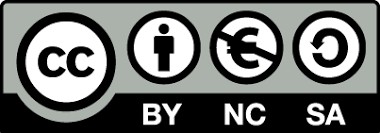การพัฒนาเพื่อลดความแออัดในโรงพยาบาล
| dc.contributor.author | สุพัตรา ศรีวณิชชากร | th_TH |
| dc.contributor.author | Supatra Srivanichakorn | en_US |
| dc.coverage.spatial | ไทย | th_TH |
| dc.date.accessioned | 2008-09-19T08:11:11Z | en_US |
| dc.date.accessioned | 2557-04-16T16:06:57Z | |
| dc.date.available | 2008-09-19T08:11:11Z | en_US |
| dc.date.available | 2557-04-16T16:06:57Z | |
| dc.date.issued | 2550 | en_US |
| dc.identifier.citation | วารสารวิจัยระบบสาธารณสุข. 1,3-4 (ต.ค-ธ.ค.2550) : 216-223 | en_US |
| dc.identifier.issn | 0858-9437 | en_US |
| dc.identifier.uri | http://hdl.handle.net/11228/92 | en_US |
| dc.description.abstract | ปัญหาความแออัดในโรงพยาบาลขนาดใหญ่เกิดจากผู้ใช้บริการมากกว่าครึ่งมีภูมิลำเนาอยู่ในเขตเมือง แม้มีปัญหาสุขภาพที่สถานพยาบาลและแพทย์ทั่วไปสามารถบริการได้ ไม่จำเป็นต้องพบแพทย์เฉพาะทาง แต่เมื่อไปรักษาที่หน่วยแพทย์ใกล้บ้านแล้วไม่ทุเลา หรือไม่ศรัทธาในคุณภาพ ประกอบกับในเขตเมืองยังมีหน่วยบริการปฐมภูมิไม่ครอบคลุมเพียงพอ ดังนั้นวิธีแก้ปัญหาความแออัดของโรงพยาบาลที่สำคัญ คือการพัฒนาบริการปฐมภูมินอกโรงพยาบาลใหญ่ให้มีคุณภาพที่ยอมรับ และสามารถดูแลต่อเนื่องทดแทนโรงพยาบาลได้ นอกจากนั้นสมควรทำการวิเคราะห์ข้อมูลให้ทราบว่าความแออัดเกิดขึ้นที่แผนกใด ช่วงเวลาใด จะได้แก้ไขลดความแออัดได้อย่างสอดคล้อง สำหรับกรณีผู้ป่วยส่วนใหญ่เป็นผู้ป่วยโรคเบาหวาน โรคความดันโลหิตสูง หรือโรคเรื้อรังที่มีสถานภาพเวชกรรมคงที่ ควรจัดระบบดูแลผู้ป่วยกลุ่มนี้เป็นการเฉพาะและมีประสิทธิภาพ เช่น จัดการดูแลร่วมกันกับหน่วยบริการปฐมภูมิ และอาจเปิดบริการรับยาต่อเนื่องจากร้านยาคุณภาพนอกโรงพยาบาล ก็เป็นอีกแนวทางหนึ่งที่ช่วยลดความแออัดได้ นอกจากนี้ในการแก้ปัญหาความแออัดในโรงพยาบาลต้องมีทีมรับผิดชอบจัดการเรื่องนี้อย่างต่อเนื่อง จริงจังโดยเฉพาะ | th_TH |
| dc.language.iso | th | en_US |
| dc.publisher | สถาบันวิจัยระบบสาธารณสุข | th_TH |
| dc.rights | สถาบันวิจัยระบบสาธารณสุข | th_TH |
| dc.title | การพัฒนาเพื่อลดความแออัดในโรงพยาบาล | th_TH |
| dc.title.alternative | Over-crowding Problems in Hospitals | en_US |
| dc.type | Article | en_US |
| dc.description.abstractalternative | Overcrowding in hospitals’ out-patient sectors is a chronic problem of public hospitals in Thailand. Patient visitors have to wait for a long time no matter how serious their illnesses. A reasonable step in solving this problem is to understand the nature of the attendants, i.e., who they are and why they come. It is known that over half of the visitors live in the local district; they come with every type of problem; most of the problems could be taken care of by practical nurses and general practitioners. The reasons for attending the hospital include ineffective treatment at primary care units, and inconvenience because there are not enough primary care units to cover the areas, and their quality is not well accepted. Therefore, an important approach to solving hospital overcrowding is strengthening the function of primary care units and forming them into a hospital network. Further, management is needed to find out which outpatient sections are crowded and when, so that supplemental services could be organized accordingly. Among the top five outpatients are those with diabetes mellitus and hypertension; these are chronic lifetime patients. Thus, the service system for this group should be organized specifically and efficiently by linking the provision of care with primary care units and/or private dispensaries to relieve the patient pressure on big hospitals. Ultimately, owing to the complexity and variability of the problem, ad hoc teams should be established specifically to be responsible for managing and monitoring the system effectively | en_US |
| dc.subject.keyword | การลดความแออัด | th_TH |
| dc.subject.keyword | โรงพยาบาลใหญ่ | th_TH |
| dc.subject.keyword | Hospital Overcrowding | en_US |
| dc.subject.keyword | Primary Care Unit | en_US |
| .custom.citation | สุพัตรา ศรีวณิชชากร and Supatra Srivanichakorn. "การพัฒนาเพื่อลดความแออัดในโรงพยาบาล." 2550. <a href="http://hdl.handle.net/11228/92">http://hdl.handle.net/11228/92</a>. | |
| .custom.total_download | 4982 | |
| .custom.downloaded_today | 0 | |
| .custom.downloaded_this_month | 9 | |
| .custom.downloaded_this_year | 438 | |
| .custom.downloaded_fiscal_year | 40 |
 | ผลงานวิชาการเหล่านี้เป็นลิขสิทธิ์ของสถาบันวิจัยระบบสาธารณสุข หากมีการนำไปใช้อ้างอิง โปรดอ้างถึงสถาบันวิจัยระบบสาธารณสุข ในฐานะเจ้าของลิขสิทธิ์ตามพระราชบัญญัติสงวนลิขสิทธิ์สำหรับการนำงานวิจัยไปใช้ประโยชน์ในเชิงพาณิชย์ |
ฉบับเต็ม
ชิ้นงานนี้ปรากฎในคอลเล็คชั่นต่อไปนี้
-
Articles [1378]
บทความวิชาการ

